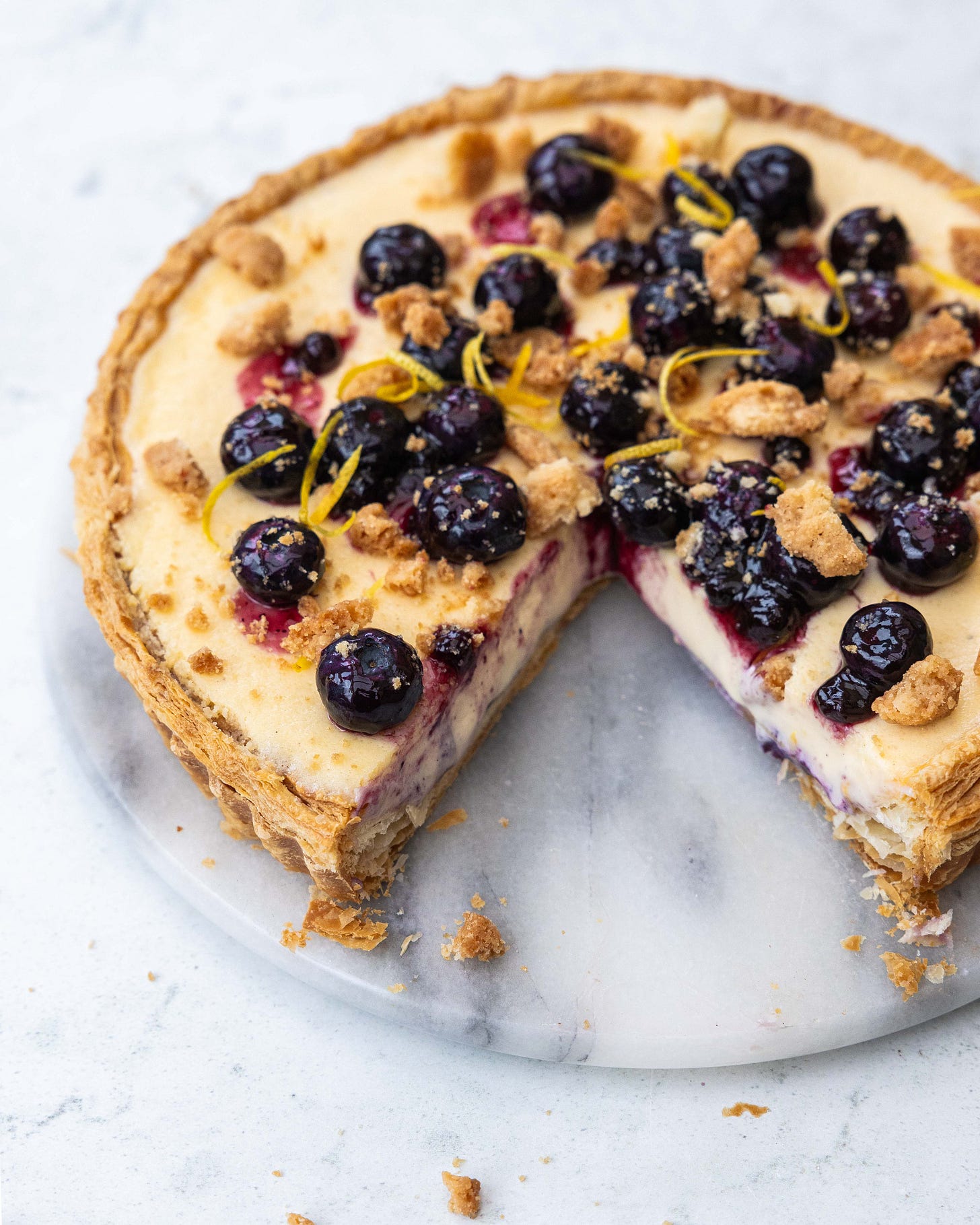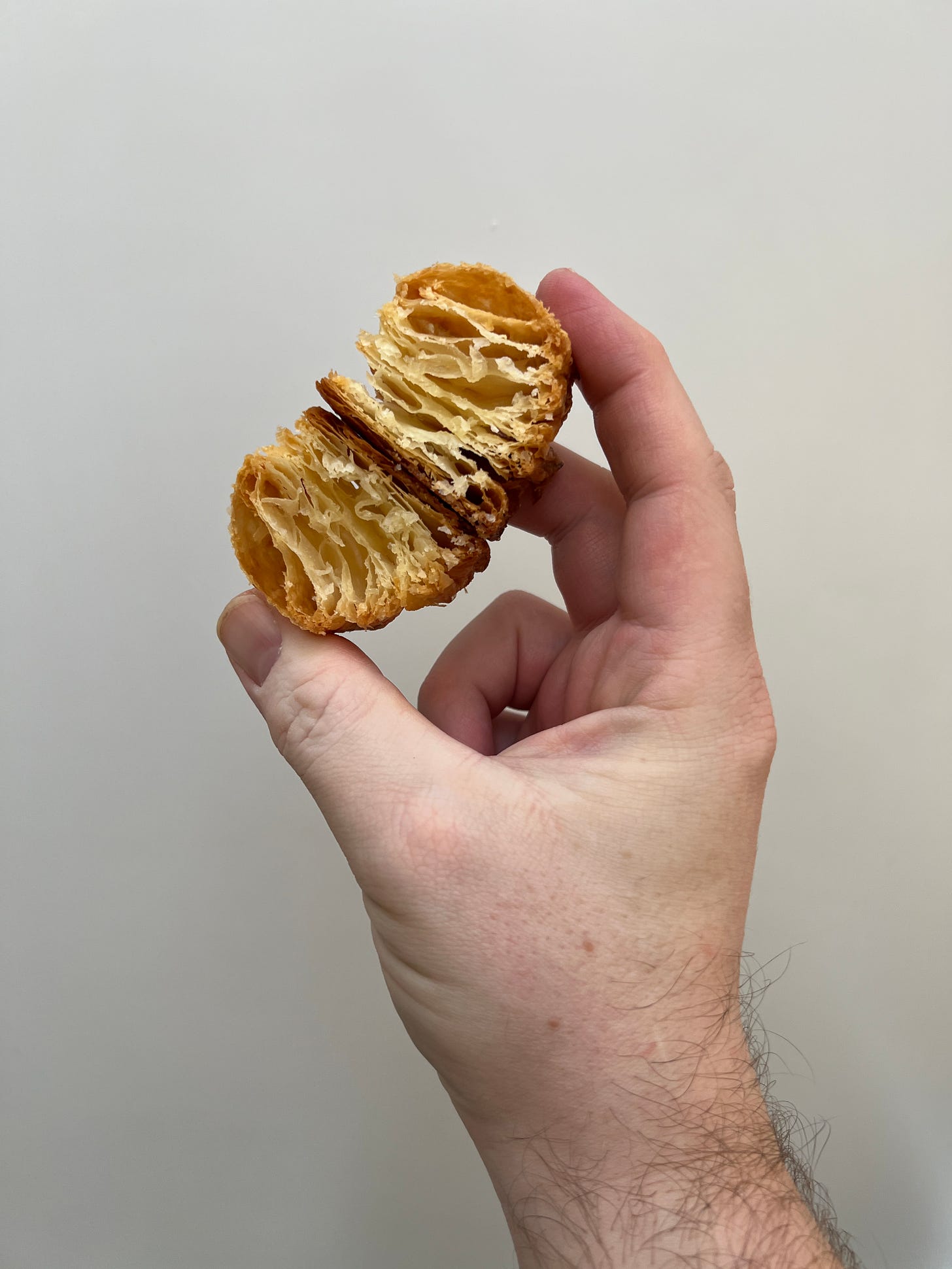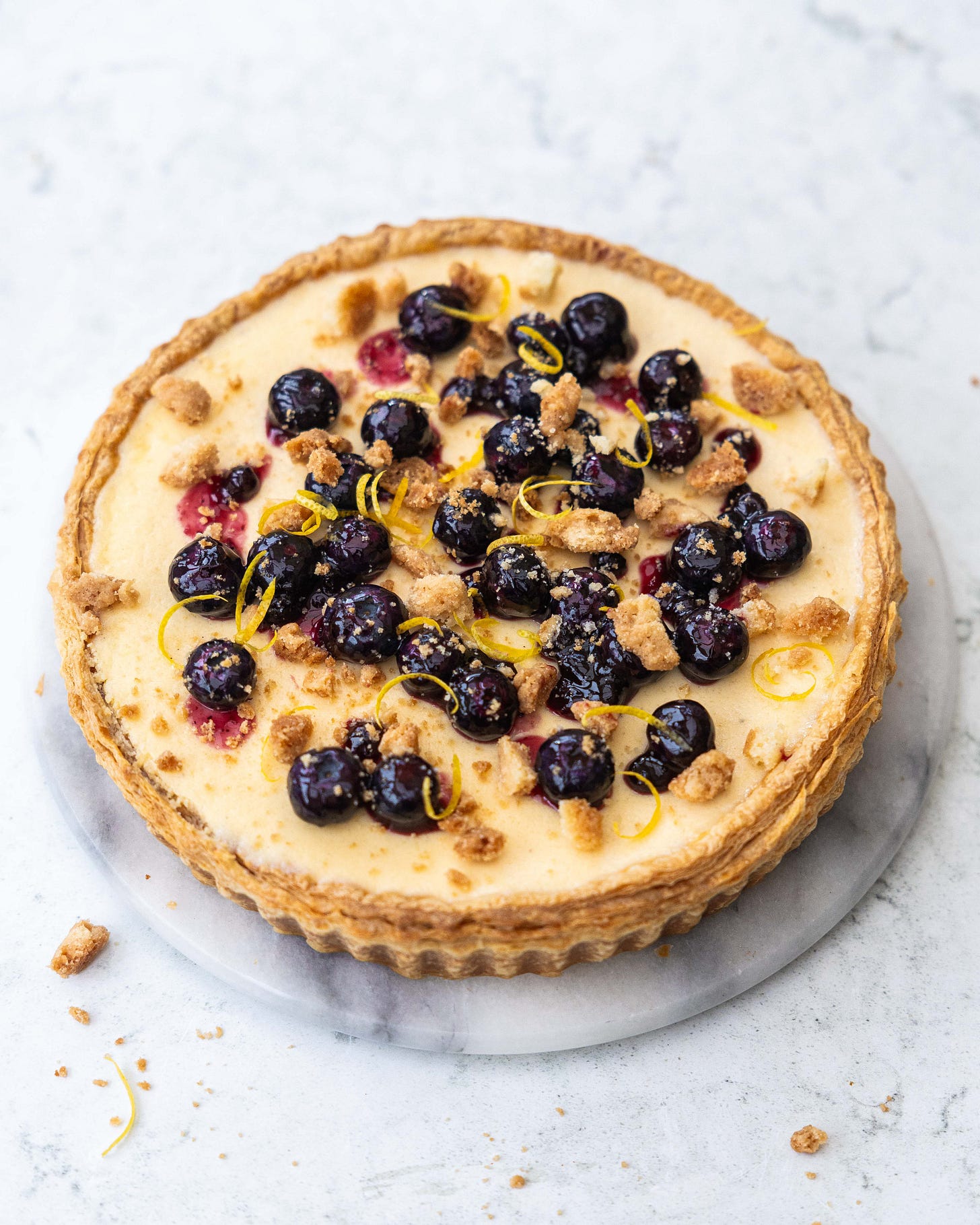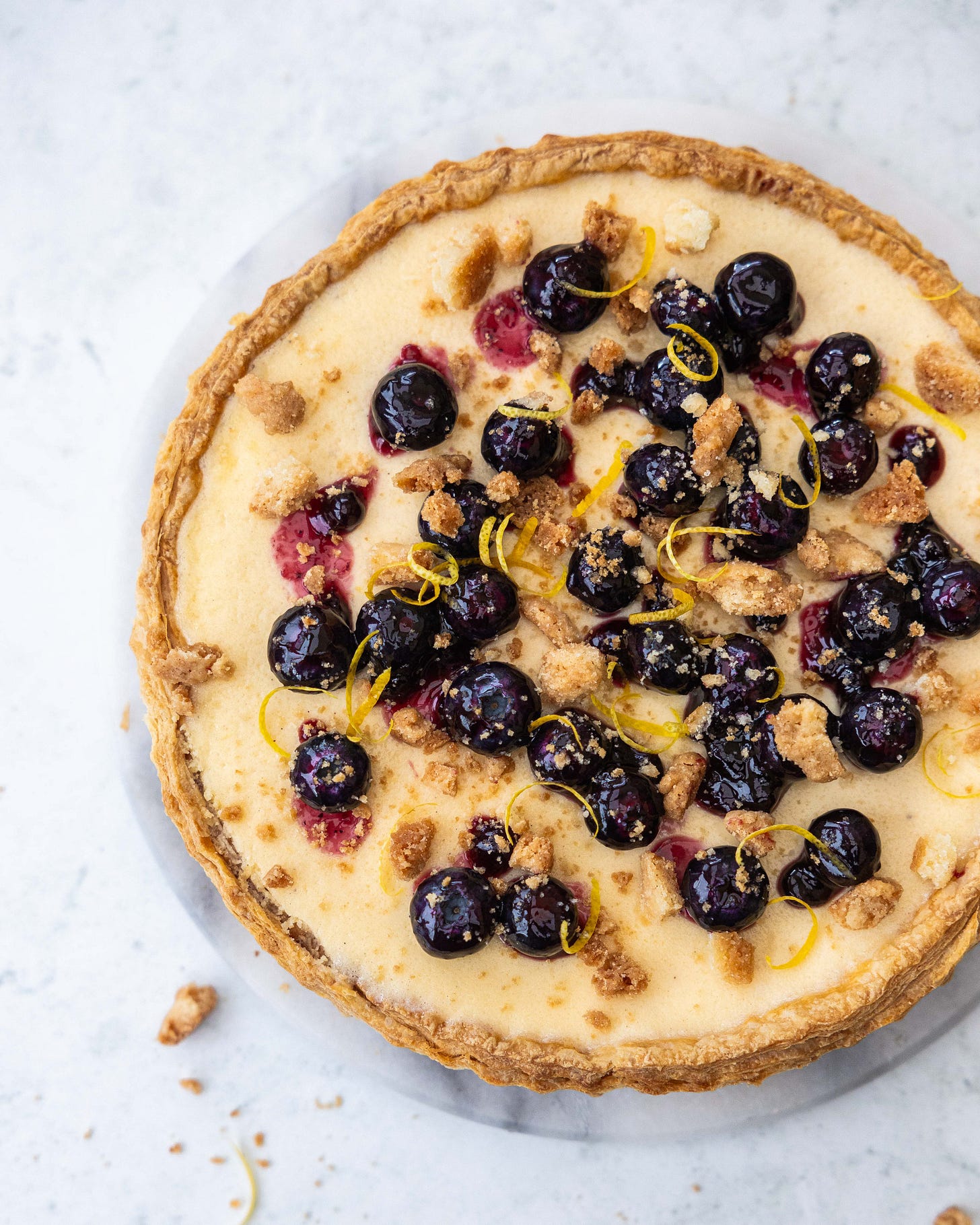Happy Sunday!
🎉 Welcome to my newsletter, The Boy Who Bakes, a subscriber supported newsletter dedicated to all things baked. This below newsletter is one of the weekly posts/recipes that are sent out to paid subsribers. For exclusive weekly recipes like this one you can upgrade to a paid membership and receive the weekly Second Helpings. It costs just £5 a month and as well as the weekly recipes that also unlocks access to the full archive of past recipes. To subscribe and get full access to the full post below, click the link below.🎉
Lets start todays post with a quick question. Does cheesecake always have to be made with a biscuit base? If not, why is it then, that it’s almost always served that way? Whilst cheesecake has become synonymous with the crumbly style base it wasn’t always the case, back in the day a pastry crust was the standard. When I say back in the day I mean back back back in the day, as in Roman times. Cheesecake, in some form or another, can be traced back to the ancient Greeks. This version of cheesecake was not what you’d picture today, it was made from cheese (likely a simple farmers cheese like ricotta) flour and honey, it was also baked on a griddle not in an oven. The romans adopted the recipe and started baking it inside pastry. The idea spread across Europe and eventually to the US where cream cheese was added in the 1940’s and the cheesecake we know and love today was born. New York is undeniably the home of American cheesecake and its the bakers in that city we have to thank for the popularity of the crumbly biscuit base, they favoured this style of base and as the popularity of the New York Cheesecake grew so did the ubiquity of biscuit bases. Whilst I love a biscuit base I wanted to do something a little different today, a throwback to older recipes, a pastry base.
For the pastry I have turned to an old favourite, my trusty flaky pastry recipe. So flaky it’s almost puff pastry but, thankfully, so much easier to make. The base is baked until a deep golden brown and then a simple cheesecake base is added and baked until ‘just’ set, with a strong wobble. That alone would be perfect but I wanted to layer in a little extras flavour. Hiding underneath the cheesecake layer is a thin layer of blueberry jam. To decorate the tart, some fresh blueberries are mixed with a touch more jam to make a glossy but very fresh tasting topping. As a final flourish, in a nod to biscuit bases a little streusel crumb is sprinkled on top. I make this crumble but if you want to cut the odd corner you can simply crumble a biscuit/cookie like a digestive or graham cracker.
The contrast in texture between the crisp flaky pastry and the barely set silky cheesecake is simply fabulous and the blueberry just brings the whole thing together, a little lemon zest in the cheesecake also helps prevent the whole thing becoming too sweet. If you wanted you could also add a sour cream layer to the top of the cheesecake like many a NY style recipe but for on this occasion I thought was a step too far.
When using the flaky pastry for a tart like this, one made with a very wet filling, it is important we take the proper precautions to prevent the pastry becoming soggy and damp. If you're using a pastry base crisp is the aim, never soggy. To prevent this, the tart shell is first blind baked for a surprisingly long time, almost 45 minutes. This is to ensure the pastry is fully baked through, is golden and shatteringly crisp. To keep the pastry like this, you can brush a very thin layer of egg yolk over the inside of the tart shell and then bake for another minute or so until the yolk sets. It is almost like waterproofing, it gives an added layer of protection, stopping the cheesecake batter seeping into the pastry.
Once the cheesecake is baking you want to bake it just until set, over baking can lead to a grainy texture and a cheesecake that splits when it cools down. Judging this can be a tad tricky but simply put; look for the wobble. As cheesecake is basically just a custard, enriched with cheese, you want to bake it until the edges of the cheesecake are set but the centre still has a good wobble. The centre shouldn’t move like liquid, it should have a slightly gelatinous texture, almost like a wobbly panna cotta. Taking it out of the oven in this state, rather than baking it until fully set, ensures the custard has a silky texture and doesn’t split. You need to remember that just because it is removed from the oven doesn’t mean it immediately stops baking, and taking it out early ensures that the finished cheesecake has the texture we want. If overcooking the cheesecake leads to it splitting why dont we immediately put the hot tart straight in the fridge to cool it down quicker? Well, just like overtaking can cause splitting so can a shock change in temperature. You need to let the cheesecake cool to room temperature and then transfer to the fridge to cool fully.
Keep reading with a 7-day free trial
Subscribe to The Boy Who Bakes to keep reading this post and get 7 days of free access to the full post archives.







